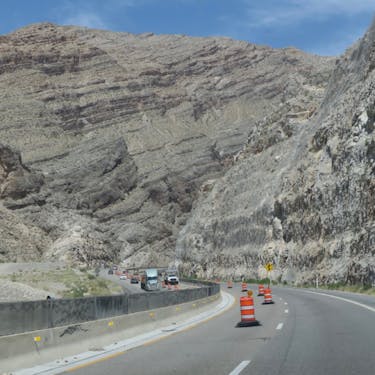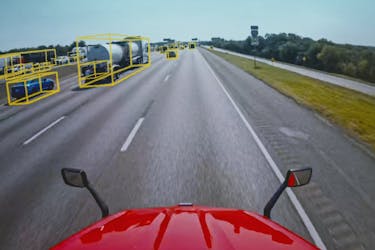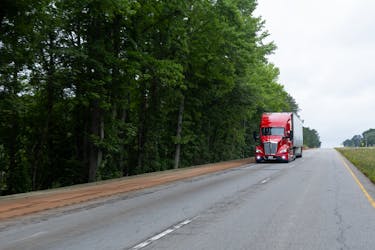Navigating construction

Construction zones are among the toughest challenges for self-driving vehicles. As any driver knows, they’re just harder to understand and navigate than normal roads. Lanes narrow and shoulders disappear, giving trucks, which are already almost as wide as a lane, even less room to maneuver. Lanes also close down, marked by a variety of different methods: traffic cones, construction vehicles, or even heavy concrete barriers. New lane lines are often painted without covering the old lines, leading to new and often confusing traffic patterns that some drivers don’t notice or follow. Construction signs may also provide special instructions, such as new merges or speed limits. Plus, the presence of construction workers means that all drivers (not just robots) need to exercise extra caution. Making matters worse, edge cases in construction zones are stacked. Construction zones mean you have less room for error when contending with other complex scenarios, like lane-splitting motorcycles or aggressive cut-offs.
Construction zones also present some unique challenges for self-driving vehicles. As Andy, our VP of Engineering, discussed in Introducing the Kodiak Driver, most self-driving systems place themselves in the world using highly-detailed maps. When a construction zone suddenly appears, those maps are no longer accurate. An out-of-date map isn’t great for a robotaxi, but if a vehicle does get stuck, it’s relatively easy to rescue it and instruct future vehicles to take other routes. On the other hand, a self-driving truck designed to operate on highways must be able to navigate construction zones safely.
We’ve designed the Kodiak Driver so that it can place itself in the world using lane markings and other cues, while leveraging maps to improve performance. When the Kodiak Driver does detect a new construction zone or other traffic shift, it can drive using lane markings instead of maps. It can then update its maps in real-time, and share those maps with the rest of the fleet. Because the Kodiak Driver can operate using relatively low-resolution maps, these updates can actually happen over-the-air.
Take the video shown below. In it, you can see the truck approach a construction zone — first, the left lane closes, then the right shoulder closes with barriers and a concrete rail. The truck navigates the construction zone smoothly, safely staying in its lane while maintaining a safe speed. For a portion of the drive, there are dots painted in the middle of the lane — perhaps previous lane lines, but confusing for humans and self-driving trucks alike.
In this case, our trucks had seen this particular construction zone — this means that the Kodiak Driver has access to an updated map that includes the construction zone. Given the updated map, navigating this construction zone is just like regular driving, albeit with additional road features to track — cones, dividers, and construction workers, to name a few.
As we continue to progress towards driverless operation, we’ll need to navigate ever more complicated work zones, both with and without maps — plus contend with the behavior of other drivers on the road. But the Kodiak Driver is well on its way to mastering construction zones, a key step towards deploying driverless.
Safe and sound journeys!

